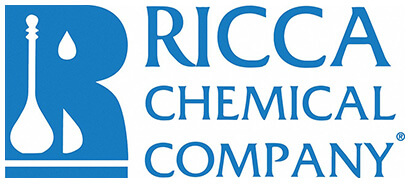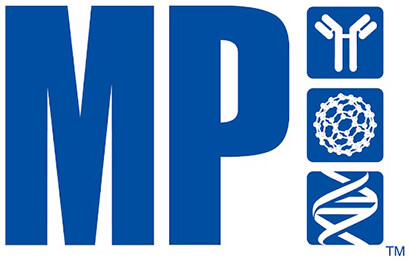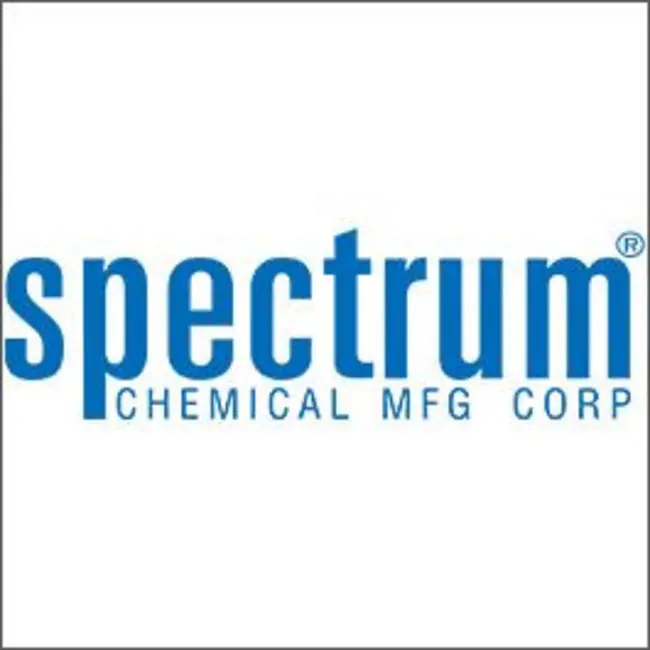Ambient
Showing 86851–86900 of 146484 results
-

Fexofenadine N-Oxide (~85%)
$709.84 Add to cart View Product DetailsMolecular Formula : C32 H39 N O5
-

Fexofenadine N-Oxide (~85%)
$1,356.71 Add to cart View Product DetailsMolecular Formula : C32 H39 N O5
-

Fexofenadine-d10 Hydrochloride
$282.90 Add to cart View Product DetailsMolecular Formula : C32 2H10 H29 N O4 . Cl H
-

Fexofenadine-d10 Hydrochloride
$2,222.66 Add to cart View Product DetailsMolecular Formula : C32 2H10 H29 N O4 . Cl H
-

Fexofenadine-D6
$238.05 Add to cart View Product DetailsMolecular Formula : C32 2H6 H33 N O4
-

Fexofenadine-d6
$1,859.55 Add to cart View Product DetailsMolecular Formula : C32 2H6 H33 N O4
-
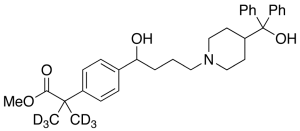
Fexofenadine-d6 Methyl Ester
$132.83 Add to cart View Product DetailsMolecular Formula : C33H35D6NO4
-

Fexofenadine-d6 Methyl Ester
$1,022.06 Add to cart View Product DetailsMolecular Formula : C33H35D6NO4
-

Fexofenadinone
$135.41 Add to cart View Product DetailsMolecular Formula : C32 H37 N O4
-

Fexofenadinone
$240.64 Add to cart View Product DetailsMolecular Formula : C32 H37 N O4
-

Fexofenadinone
$696.90 Add to cart View Product DetailsMolecular Formula : C32 H37 N O4
-

Fexofenadinone Hydrochloride
$111.26 Add to cart View Product DetailsMolecular Formula : C32H37NO4 • (HCl)x
-

Fexofenadinone Hydrochloride
$192.34 Add to cart View Product DetailsMolecular Formula : C32H37NO4 • (HCl)x
-

Fexofenadinone Hydrochloride
$564.08 Add to cart View Product DetailsMolecular Formula : C32H37NO4 • (HCl)x
-
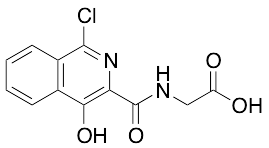
FG 2216
$165.60 Add to cart View Product DetailsMolecular Formula : C12 H9 Cl N2 O4
-

FG 2216
$763.31 Add to cart View Product DetailsMolecular Formula : C12 H9 Cl N2 O4
-

FG 2216
$1,316.18 Add to cart View Product DetailsMolecular Formula : C12 H9 Cl N2 O4
-
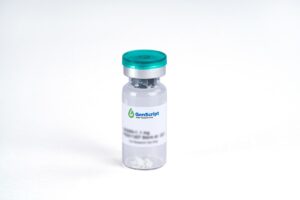
FGF-10, Human
$1,323.94 Add to cart View Product DetailsFibroblast Growth Factor-10 (FGF-10) is a mitogen mainly produced by mesenchymal stem cells in the lung. FGF-10 belongs to the heparin binding FGF family, and is also known as Keratinocyte Growth Factor-2 (KGF-2). It shares homology with KGF and receptor binding to FGFR2-IIIb. However, while KGF induces proliferation and differentiation of various epithelial cells, FGF-10 promotes budding and branching morphogenesis during the multi-organ development via mesenchymal-epithelial cell interactions. FGF-10 is critical for lung and limb development, and is regulated by Shh during early development.
-
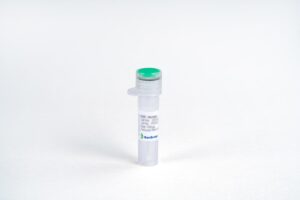
FGF-10, Human
$63.83 Add to cart View Product DetailsFibroblast Growth Factor-10 (FGF-10) is a mitogen mainly produced by mesenchymal stem cells in the lung. FGF-10 belongs to the heparin binding FGF family, and is also known as Keratinocyte Growth Factor-2 (KGF-2). It shares homology with KGF and receptor binding to FGFR2-IIIb. However, while KGF induces proliferation and differentiation of various epithelial cells, FGF-10 promotes budding and branching morphogenesis during the multi-organ development via mesenchymal-epithelial cell interactions. FGF-10 is critical for lung and limb development, and is regulated by Shh during early development.
-

FGF-10, Human
$155.25 Add to cart View Product DetailsFibroblast Growth Factor-10 (FGF-10) is a mitogen mainly produced by mesenchymal stem cells in the lung. FGF-10 belongs to the heparin binding FGF family, and is also known as Keratinocyte Growth Factor-2 (KGF-2). It shares homology with KGF and receptor binding to FGFR2-IIIb. However, while KGF induces proliferation and differentiation of various epithelial cells, FGF-10 promotes budding and branching morphogenesis during the multi-organ development via mesenchymal-epithelial cell interactions. FGF-10 is critical for lung and limb development, and is regulated by Shh during early development.
-

FGF-10, Mouse
$1,470.56 Add to cart View Product DetailsFibroblast Growth Factor-10 (FGF-10) is a mitogen mainly produced by mesenchymal stem cells in lung. FGF-10 belongs to the heparin binding FGF family, and is also known as Keratinocyte Growth Factor-2 (KGF-2). It shares homology with KGF, and both KGF and FGF-10 activate the receptor FGFR2-IIIb. However, unlike KGF, which induces the proliferation and differentiation of various epithelial cells, FGF-10 is an essential factor for the budding and branching morphogenesis during multi-organ development via mesenchymal-epithelial interactions. FGF-10 is crucial for lung and limb development and is regulated by Shh during early development.
-

FGF-10, Mouse
$68.14 Add to cart View Product DetailsFibroblast Growth Factor-10 (FGF-10) is a mitogen mainly produced by mesenchymal stem cells in lung. FGF-10 belongs to the heparin binding FGF family, and is also known as Keratinocyte Growth Factor-2 (KGF-2). It shares homology with KGF, and both KGF and FGF-10 activate the receptor FGFR2-IIIb. However, unlike KGF, which induces the proliferation and differentiation of various epithelial cells, FGF-10 is an essential factor for the budding and branching morphogenesis during multi-organ development via mesenchymal-epithelial interactions. FGF-10 is crucial for lung and limb development and is regulated by Shh during early development.
-

FGF-10, Mouse
$155.25 Add to cart View Product DetailsFibroblast Growth Factor-10 (FGF-10) is a mitogen mainly produced by mesenchymal stem cells in lung. FGF-10 belongs to the heparin binding FGF family, and is also known as Keratinocyte Growth Factor-2 (KGF-2). It shares homology with KGF, and both KGF and FGF-10 activate the receptor FGFR2-IIIb. However, unlike KGF, which induces the proliferation and differentiation of various epithelial cells, FGF-10 is an essential factor for the budding and branching morphogenesis during multi-organ development via mesenchymal-epithelial interactions. FGF-10 is crucial for lung and limb development and is regulated by Shh during early development.
-

FGF-12, Human
$2,238.19 Add to cart View Product DetailsFibroblast Growth Factor 12 (FGF-12) is a member of the fibroblast growth factor (FGF) family. FGF-12 is probably involved in nervous system development and function. FGF-12 lacks the N-terminal signal sequence present in most of the FGF family members, but it contains clusters of basic residues that have been demonstrated to act as a nuclear localization signal. When transfected into mammalian cells, this protein accumulated in the nucleus, but was not secreted. The specific function of this gene has not yet been determined. Two alternatively spliced transcript variants encoding distinct isoforms have been reported.
-

FGF-12, Human
$452.81 Add to cart View Product DetailsFibroblast Growth Factor 12 (FGF-12) is a member of the fibroblast growth factor (FGF) family. FGF-12 is probably involved in nervous system development and function. FGF-12 lacks the N-terminal signal sequence present in most of the FGF family members, but it contains clusters of basic residues that have been demonstrated to act as a nuclear localization signal. When transfected into mammalian cells, this protein accumulated in the nucleus, but was not secreted. The specific function of this gene has not yet been determined. Two alternatively spliced transcript variants encoding distinct isoforms have been reported.
-

FGF-16, Human
$1,323.94 Add to cart View Product DetailsFibroblast Growth Factor-16 (FGF-16) is a heparin binding growth factor, a member of the FGF family. All FGF family members are heparinbinding growth factors with a core 120 amino acid (aa) FGF domain that allows for a common tertiary structure. FGF family members possess broad mitogenic and cell survival activities, and are involved in a variety of biological processes, including embryonic development, cell growth, morphogenesis, tissue repair, tumor growth and invasion. The rat homolog is predominantly expressed in embryonic brown adipose tissue and has significant mitogenic activity, which suggests a role in proliferation of embryonic brown adipose tissue. FGF-16 is most similar to FGF-9 (73 % amino acid identity). The protein sequence of human FGF-16 displays 98.6% identity with rat FGF-16. Chimpanzee FGF-16 (207 amino acids), chicken FGF-16 (207 amino acids), and zebrafish FGF-16 (203 amino acids) show 100 %, 89.9 %, and 79.2 % total amino acid identity with human FGF-16.
-

FGF-16, Human
$63.83 Add to cart View Product DetailsFibroblast Growth Factor-16 (FGF-16) is a heparin binding growth factor, a member of the FGF family. All FGF family members are heparinbinding growth factors with a core 120 amino acid (aa) FGF domain that allows for a common tertiary structure. FGF family members possess broad mitogenic and cell survival activities, and are involved in a variety of biological processes, including embryonic development, cell growth, morphogenesis, tissue repair, tumor growth and invasion. The rat homolog is predominantly expressed in embryonic brown adipose tissue and has significant mitogenic activity, which suggests a role in proliferation of embryonic brown adipose tissue. FGF-16 is most similar to FGF-9 (73 % amino acid identity). The protein sequence of human FGF-16 displays 98.6% identity with rat FGF-16. Chimpanzee FGF-16 (207 amino acids), chicken FGF-16 (207 amino acids), and zebrafish FGF-16 (203 amino acids) show 100 %, 89.9 %, and 79.2 % total amino acid identity with human FGF-16.
-

FGF-16, Human
$155.25 Add to cart View Product DetailsFibroblast Growth Factor-16 (FGF-16) is a heparin binding growth factor, a member of the FGF family. All FGF family members are heparinbinding growth factors with a core 120 amino acid (aa) FGF domain that allows for a common tertiary structure. FGF family members possess broad mitogenic and cell survival activities, and are involved in a variety of biological processes, including embryonic development, cell growth, morphogenesis, tissue repair, tumor growth and invasion. The rat homolog is predominantly expressed in embryonic brown adipose tissue and has significant mitogenic activity, which suggests a role in proliferation of embryonic brown adipose tissue. FGF-16 is most similar to FGF-9 (73 % amino acid identity). The protein sequence of human FGF-16 displays 98.6% identity with rat FGF-16. Chimpanzee FGF-16 (207 amino acids), chicken FGF-16 (207 amino acids), and zebrafish FGF-16 (203 amino acids) show 100 %, 89.9 %, and 79.2 % total amino acid identity with human FGF-16.
-
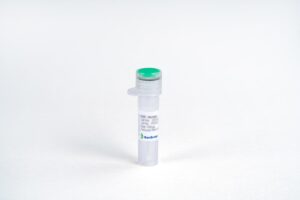
FGF-18, Human
$1,470.56 Add to cart View Product DetailsFibroblast Growth Factor-18 (FGF-18) is a heparin-binding growth factor that is a member of the FGF family. FGF-18 signals through FGFR 1c, 2c, 3c, and 4. FGF-18 plays an important role in the regulation of cell proliferation, cell differentiation and cell migration. FGF-18 is required for normal ossification and bone development. It can also stimulate hepatic and intestinal proliferation.
-

FGF-18, Human
$68.14 Add to cart View Product DetailsFibroblast Growth Factor-18 (FGF-18) is a heparin-binding growth factor that is a member of the FGF family. FGF-18 signals through FGFR 1c, 2c, 3c, and 4. FGF-18 plays an important role in the regulation of cell proliferation, cell differentiation and cell migration. FGF-18 is required for normal ossification and bone development. It can also stimulate hepatic and intestinal proliferation.
-

FGF-18, Human
$155.25 Add to cart View Product DetailsFibroblast Growth Factor-18 (FGF-18) is a heparin-binding growth factor that is a member of the FGF family. FGF-18 signals through FGFR 1c, 2c, 3c, and 4. FGF-18 plays an important role in the regulation of cell proliferation, cell differentiation and cell migration. FGF-18 is required for normal ossification and bone development. It can also stimulate hepatic and intestinal proliferation.
-

FGF-18, Mouse
$2,238.19 Add to cart View Product DetailsMurine FGF-18 is encoded by the FGF18 gene. By phylogenetic analysis and gene location analysis, FGF-18 is divided into FGF-8 subfamily which has three members FGF-8, FGF-17 and FGF-18. Using FGF knockout mice model, the numbers of this subfamily were testified that have crucial roles in embryo development. FGF-18–/– mice have decreased expression of osteogenic markers and delayed long-bone ossification. FGF-18 has been shown in vitro that this protein is able to induce neurite outgrowth in PC12 cells. In addition, it also has significant roles in lung development and has an anabolic effect on cartilage formation.
-

FGF-18, Mouse
$452.81 Add to cart View Product DetailsMurine FGF-18 is encoded by the FGF18 gene. By phylogenetic analysis and gene location analysis, FGF-18 is divided into FGF-8 subfamily which has three members FGF-8, FGF-17 and FGF-18. Using FGF knockout mice model, the numbers of this subfamily were testified that have crucial roles in embryo development. FGF-18–/– mice have decreased expression of osteogenic markers and delayed long-bone ossification. FGF-18 has been shown in vitro that this protein is able to induce neurite outgrowth in PC12 cells. In addition, it also has significant roles in lung development and has an anabolic effect on cartilage formation.
-

FGF-18, Rat
$1,470.56 Add to cart View Product DetailsFibroblast Growth Factor 18 (FGF-18) is a pleiotropic cytokine belonging to the heparin-binding FGF family, which has 23 different members. Structurally, FGF-18 is closely related to FGF-8 and FGF-17. Like other FGFs, FGF-18 can bind to different FGF receptors in vivo. FGF-18 is expressed in various tissues and has multiple functions: during long bone growth, FGF-18 is expressed in perichondrium and developing joints, and regulates bone formation by inhibiting chondrocyte proliferation and differentiation; FGF-18 knock-out mice survive embryonic development, but exhibit skeletal abnormalities and die in the early neonatal period. FGF-18 also induces ectopic cartilage formation in the lung, and alters the morphology of the pulmonary mesenchyma.
-

FGF-18, Rat
$68.14 Add to cart View Product DetailsFibroblast Growth Factor 18 (FGF-18) is a pleiotropic cytokine belonging to the heparin-binding FGF family, which has 23 different members. Structurally, FGF-18 is closely related to FGF-8 and FGF-17. Like other FGFs, FGF-18 can bind to different FGF receptors in vivo. FGF-18 is expressed in various tissues and has multiple functions: during long bone growth, FGF-18 is expressed in perichondrium and developing joints, and regulates bone formation by inhibiting chondrocyte proliferation and differentiation; FGF-18 knock-out mice survive embryonic development, but exhibit skeletal abnormalities and die in the early neonatal period. FGF-18 also induces ectopic cartilage formation in the lung, and alters the morphology of the pulmonary mesenchyma.
-

FGF-18, Rat
$155.25 Add to cart View Product DetailsFibroblast Growth Factor 18 (FGF-18) is a pleiotropic cytokine belonging to the heparin-binding FGF family, which has 23 different members. Structurally, FGF-18 is closely related to FGF-8 and FGF-17. Like other FGFs, FGF-18 can bind to different FGF receptors in vivo. FGF-18 is expressed in various tissues and has multiple functions: during long bone growth, FGF-18 is expressed in perichondrium and developing joints, and regulates bone formation by inhibiting chondrocyte proliferation and differentiation; FGF-18 knock-out mice survive embryonic development, but exhibit skeletal abnormalities and die in the early neonatal period. FGF-18 also induces ectopic cartilage formation in the lung, and alters the morphology of the pulmonary mesenchyma.
-

FGF-21, His, Human
$1,470.56 Add to cart View Product DetailsFGF-21, also known as fibroblast growth factor-21 and FGFL, is a secreted growth factor belonging to theheparin-binding growth factor family. It is produced by hepatocytes in response to fatty acid stimulation. FGF-21 couples with its co-factor beta-Klotho to signal through FGFR1c and FGFR4. Signal transduction results in insulin-independent uptake of glucose by adipocytes. Clinical administration of FGF-21 induces energy expenditure, fat utilization and lipid excretion.
-

FGF-21, His, Human
$72.45 Add to cart View Product DetailsFGF-21, also known as fibroblast growth factor-21 and FGFL, is a secreted growth factor belonging to theheparin-binding growth factor family. It is produced by hepatocytes in response to fatty acid stimulation. FGF-21 couples with its co-factor beta-Klotho to signal through FGFR1c and FGFR4. Signal transduction results in insulin-independent uptake of glucose by adipocytes. Clinical administration of FGF-21 induces energy expenditure, fat utilization and lipid excretion.
-

FGF-21, His, Human
$194.06 Add to cart View Product DetailsFGF-21, also known as fibroblast growth factor-21 and FGFL, is a secreted growth factor belonging to theheparin-binding growth factor family. It is produced by hepatocytes in response to fatty acid stimulation. FGF-21 couples with its co-factor beta-Klotho to signal through FGFR1c and FGFR4. Signal transduction results in insulin-independent uptake of glucose by adipocytes. Clinical administration of FGF-21 induces energy expenditure, fat utilization and lipid excretion.
-

FGF-21, Human
$1,470.56 Add to cart View Product DetailsFibroblast Growth Factor-21 (FGF-21) is a metabolic cytokine belonging to the heparin-binding FGF family. Along with FGF-19/15 and FGF-23, FGF-21 is categorized as a member of the atypical FGF subfamily, as it must be complexed to the Klotho co-receptor in order to bind to the FGF receptors and activate the downstream signaling pathway. In vivo FGF-21 is expressed in liver, pancreas, adipose tissue, and skeletal muscle, and it plays a central role in the energy metabolism. The expression of FGF-21 is stimulated by free fatty acids and insulin resistant states and is correlated with whole-body insulin resistance. FGF-21 activates glucose uptake in adipocytes and increases insulin sensitivity, implicating it as a novel target with potential anti-diabetic properties.
-

FGF-21, Human
$68.14 Add to cart View Product DetailsFibroblast Growth Factor-21 (FGF-21) is a metabolic cytokine belonging to the heparin-binding FGF family. Along with FGF-19/15 and FGF-23, FGF-21 is categorized as a member of the atypical FGF subfamily, as it must be complexed to the Klotho co-receptor in order to bind to the FGF receptors and activate the downstream signaling pathway. In vivo FGF-21 is expressed in liver, pancreas, adipose tissue, and skeletal muscle, and it plays a central role in the energy metabolism. The expression of FGF-21 is stimulated by free fatty acids and insulin resistant states and is correlated with whole-body insulin resistance. FGF-21 activates glucose uptake in adipocytes and increases insulin sensitivity, implicating it as a novel target with potential anti-diabetic properties.
-

FGF-21, Human
$155.25 Add to cart View Product DetailsFibroblast Growth Factor-21 (FGF-21) is a metabolic cytokine belonging to the heparin-binding FGF family. Along with FGF-19/15 and FGF-23, FGF-21 is categorized as a member of the atypical FGF subfamily, as it must be complexed to the Klotho co-receptor in order to bind to the FGF receptors and activate the downstream signaling pathway. In vivo FGF-21 is expressed in liver, pancreas, adipose tissue, and skeletal muscle, and it plays a central role in the energy metabolism. The expression of FGF-21 is stimulated by free fatty acids and insulin resistant states and is correlated with whole-body insulin resistance. FGF-21 activates glucose uptake in adipocytes and increases insulin sensitivity, implicating it as a novel target with potential anti-diabetic properties.
-

FGF-21, Mouse
$1,470.56 Add to cart View Product DetailsFibroblast growth factor-21 (FGF21) belongs to the large FGF family which has at least 23 members. Along with FGF-19/15 and FGF-23, FGF-21 is categorized as a member of the atypical FGF subfamily, as it must be complexed to the Klotho co-receptor in order to bind to the FGF receptors and activate the downstream signaling pathway. FGF family members possess broad mitogenic and cell survival activities and are involved in a variety of biological processes including embryonic development, cell growth, morphogenesis, tissue repair, tumor growth and invasion.
-

FGF-21, Mouse
$68.14 Add to cart View Product DetailsFibroblast growth factor-21 (FGF21) belongs to the large FGF family which has at least 23 members. Along with FGF-19/15 and FGF-23, FGF-21 is categorized as a member of the atypical FGF subfamily, as it must be complexed to the Klotho co-receptor in order to bind to the FGF receptors and activate the downstream signaling pathway. FGF family members possess broad mitogenic and cell survival activities and are involved in a variety of biological processes including embryonic development, cell growth, morphogenesis, tissue repair, tumor growth and invasion.
-

FGF-21, Mouse
$155.25 Add to cart View Product DetailsFibroblast growth factor-21 (FGF21) belongs to the large FGF family which has at least 23 members. Along with FGF-19/15 and FGF-23, FGF-21 is categorized as a member of the atypical FGF subfamily, as it must be complexed to the Klotho co-receptor in order to bind to the FGF receptors and activate the downstream signaling pathway. FGF family members possess broad mitogenic and cell survival activities and are involved in a variety of biological processes including embryonic development, cell growth, morphogenesis, tissue repair, tumor growth and invasion.
-

FGF-4, Human
$245.81 Add to cart View Product DetailsFibroblast Growth Factor-4 (FGF-4) also known as K-FGF is a heparin-binding growth factor of the FGF family.It was identified by its oncogenic transforming activity. FGF-4 and FGF-3 are located closely on chromosome 11. FGF-4 and its receptors (FGF R1c, 2c, 3c and 4) play an important role in the regulation of embryonic development, cell proliferation, and cell differentiation. FGF-4 is required for normal limb and cardiac valve development during embryogenesis.
-

FGF-4, Human
$86.25 Add to cart View Product DetailsFibroblast Growth Factor-4 (FGF-4) also known as K-FGF is a heparin-binding growth factor of the FGF family.It was identified by its oncogenic transforming activity. FGF-4 and FGF-3 are located closely on chromosome 11. FGF-4 and its receptors (FGF R1c, 2c, 3c and 4) play an important role in the regulation of embryonic development, cell proliferation, and cell differentiation. FGF-4 is required for normal limb and cardiac valve development during embryogenesis.
-

FGF-4, Human
$43.13 Add to cart View Product DetailsFibroblast Growth Factor-4 (FGF-4) also known as K-FGF is a heparin-binding growth factor of the FGF family.It was identified by its oncogenic transforming activity. FGF-4 and FGF-3 are located closely on chromosome 11. FGF-4 and its receptors (FGF R1c, 2c, 3c and 4) play an important role in the regulation of embryonic development, cell proliferation, and cell differentiation. FGF-4 is required for normal limb and cardiac valve development during embryogenesis.
-

FGF-6, Human
$1,470.56 Add to cart View Product DetailsFibroblast Growth Factor-6 (FGF-6) is a cytokine belonging to the heparin-binding FGF family, and is structurally related to other members of FGF family, particularly FGF-4. In vivo, FGF-6 exhibits an expression profile predominantly restricted tothe myogenic lineage, and it preferentially binds to two of the FGF receptors: FGFR1 and FGFR4. FGF-6 functions in muscle regeneration, myoblast proliferation and migration, and muscle differentiation in a dose-dependent manner. In vivo high concentration of recombinant FGF-6 up-regulates and down-regulates FGFR1 and FGFR4, respectively, as FGFR1 promotes the proliferation while FGFR4 promotes the differentiation in the muscle. Besides its dual function in muscle regeneration, FGF-6 may act as a regulator of bone metabolism as well.
-

FGF-6, Human
$68.14 Add to cart View Product DetailsFibroblast Growth Factor-6 (FGF-6) is a cytokine belonging to the heparin-binding FGF family, and is structurally related to other members of FGF family, particularly FGF-4. In vivo, FGF-6 exhibits an expression profile predominantly restricted tothe myogenic lineage, and it preferentially binds to two of the FGF receptors: FGFR1 and FGFR4. FGF-6 functions in muscle regeneration, myoblast proliferation and migration, and muscle differentiation in a dose-dependent manner. In vivo high concentration of recombinant FGF-6 up-regulates and down-regulates FGFR1 and FGFR4, respectively, as FGFR1 promotes the proliferation while FGFR4 promotes the differentiation in the muscle. Besides its dual function in muscle regeneration, FGF-6 may act as a regulator of bone metabolism as well.


